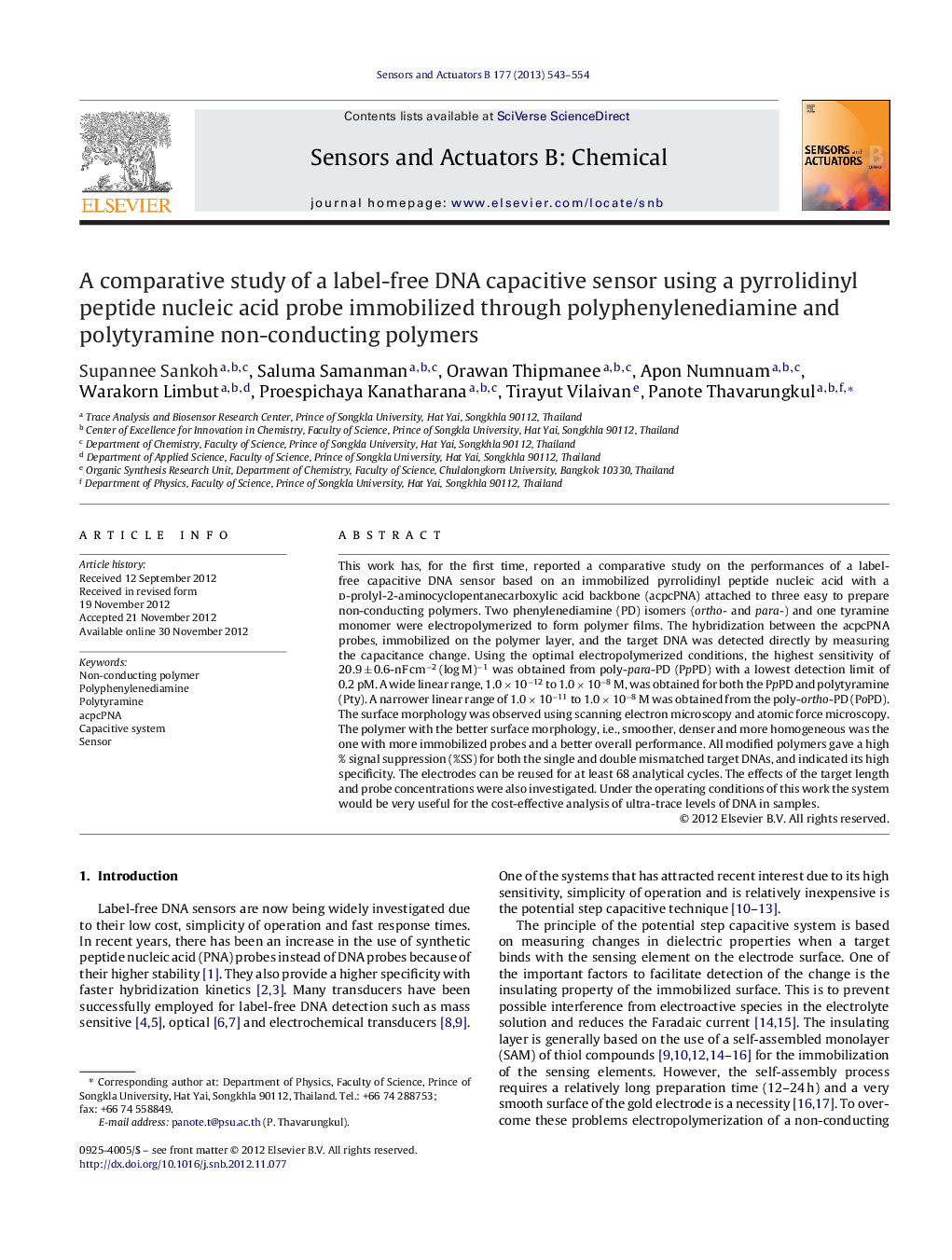| Article ID | Journal | Published Year | Pages | File Type |
|---|---|---|---|---|
| 742380 | Sensors and Actuators B: Chemical | 2013 | 12 Pages |
This work has, for the first time, reported a comparative study on the performances of a label-free capacitive DNA sensor based on an immobilized pyrrolidinyl peptide nucleic acid with a d-prolyl-2-aminocyclopentanecarboxylic acid backbone (acpcPNA) attached to three easy to prepare non-conducting polymers. Two phenylenediamine (PD) isomers (ortho- and para-) and one tyramine monomer were electropolymerized to form polymer films. The hybridization between the acpcPNA probes, immobilized on the polymer layer, and the target DNA was detected directly by measuring the capacitance change. Using the optimal electropolymerized conditions, the highest sensitivity of 20.9 ± 0.6-nF cm−2 (log M)−1 was obtained from poly-para-PD (PpPD) with a lowest detection limit of 0.2 pM. A wide linear range, 1.0 × 10−12 to 1.0 × 10−8 M, was obtained for both the PpPD and polytyramine (Pty). A narrower linear range of 1.0 × 10−11 to 1.0 × 10−8 M was obtained from the poly-ortho-PD (PoPD). The surface morphology was observed using scanning electron microscopy and atomic force microscopy. The polymer with the better surface morphology, i.e., smoother, denser and more homogeneous was the one with more immobilized probes and a better overall performance. All modified polymers gave a high % signal suppression (%SS) for both the single and double mismatched target DNAs, and indicated its high specificity. The electrodes can be reused for at least 68 analytical cycles. The effects of the target length and probe concentrations were also investigated. Under the operating conditions of this work the system would be very useful for the cost-effective analysis of ultra-trace levels of DNA in samples.
